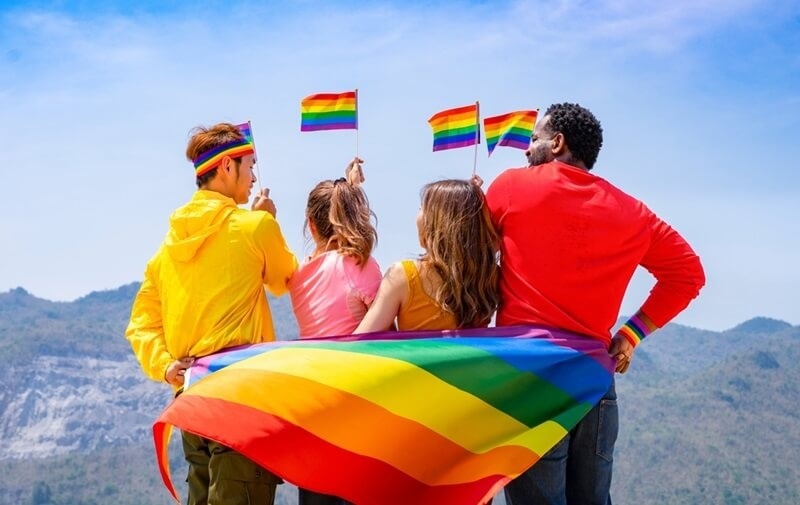Empowering LGBTQ+ Students: Know Your Rights and Resources

Understanding and asserting the rights of LGBTQ students in schools is paramount for fostering an inclusive and supportive educational environment. These rights ensure that every student, regardless of their sexual orientation or gender identity, can thrive academically and socially without fear of discrimination or harassment. This guide highlights the key areas where LGBTQ students are protected and empowered to be themselves.
Embracing Your True Identity at School
Expressing Your Authentic Self
Every LGBTQ student has the right to be open about their identity at school. This includes the freedom to come out and live openly without fear of retribution. Schools must respect students sexual orientation and gender identity, allowing them to be themselves fully.
Using the Correct Name and Pronouns
One critical aspect of expressing one's identity is being addressed by the name and pronouns that align with their gender identity. Schools are required to honor this, even if the student has not legally changed their name or gender marker. This recognition is fundamental to the students dignity and self-respect.
Freedom in Dress
Students have the right to dress in a manner that reflects their gender identity. This includes wearing clothes that align with how they identify, both during school hours and at school events. Dress codes should not enforce gender stereotypes and must be applied equally to all students.
Freedom to Express Beliefs and Opinions

Right to Speak Out
LGBTQ students have the right to express their opinions and beliefs about LGBTQ-related issues. This includes wearing t-shirts, badges, and other items that convey support for LGBTQ rights. Schools must allow this form of expression as long as it does not disrupt the educational process.
Acceptable Forms of Expression
Students can showcase their support for LGBTQ issues through various means such as wearing supportive clothing, displaying badges, and including LGBTQ-positive quotes in yearbooks. They are also entitled to bring a same-sex date to prom or other school events, promoting a more inclusive environment.
Limits on Free Speech
While students have broad rights to free expression, these rights are not unlimited. Speech that significantly disrupts the school environment, encourages rule-breaking, or is obscene can be regulated. However, peaceful and respectful expression of LGBTQ support must be protected.
Addressing Harassment and Bullying
Identifying Harassment
Harassment and bullying based on sexual orientation or gender identity are prohibited. This includes verbal abuse, physical threats, and discriminatory actions that target LGBTQ students.
Legal Protections
Schools are legally obligated to protect students from harassment and bullying. This involves implementing policies to prevent such behavior and taking immediate action when incidents occur. Effective anti-bullying measures create a safer environment for all students.
Examples of Successful Interventions
Numerous cases highlight successful interventions where schools have taken decisive actions to protect LGBTQ students. These interventions often involve training staff to recognize and address harassment, thereby ensuring a supportive school climate.
Ensuring Student Privacy
Privacy Rights
LGBTQ students have the right to keep their gender identity and sexual orientation private. Schools cannot disclose this information without the student's consent, except in specific circumstances where there is a compelling reason to do so.
Limits on Information Sharing
School staff must respect students' privacy and are generally prohibited from sharing personal information about a students LGBTQ status. This ensures that students are not inadvertently outed, which could expose them to additional risks.
Informed Consent and Safety Concerns
In some cases, schools may need to inform parents about a student's LGBTQ status, but this should only be done with the students consent and when absolutely necessary for the students safety. Schools must handle such situations with sensitivity and prioritize the student's well-being.
By understanding and asserting these rights, LGBTQ students can navigate their educational journey with confidence and support. Ensuring these rights are upheld is crucial for creating a school environment where every student can thrive.
Gay-Straight Alliances (GSAs)
The Right to Establish and Participate in GSAs
Every student has the right to form and participate in Gay-Straight Alliances (GSAs). These clubs provide a safe and supportive environment for LGBTQ students and their allies. If a school permits other non-curricular clubs, it must allow GSAs to form and operate under the same conditions.
Importance of GSAs in Schools
GSAs play a crucial role in fostering an inclusive and supportive school environment. They offer a space for students to discuss LGBTQ issues, promote awareness, and work towards ending discrimination. By providing support and solidarity, GSAs help reduce feelings of isolation among LGBTQ students and empower them to advocate for their rights and the rights of others.
Legal Support for GSAs
The formation and equal treatment of GSAs are backed by federal laws such as the Equal Access Act, which mandates that schools must treat all non-curricular clubs equally. This means that GSAs should have the same access to school resources, meeting spaces, and opportunities to promote their activities as any other non-curricular group. For additional guidance and support, explore transgender resources for health to ensure all student needs are met comprehensively.
LGBTQ+ Inclusive Instruction
Legal Requirements for Inclusive Education
Schools are legally required to provide unbiased and inclusive curricula that reflect the contributions and experiences of LGBTQ individuals. This ensures that students receive a well-rounded education that acknowledges and respects diversity.
The FAIR Education Act
The FAIR (Fair, Accurate, Inclusive, and Respectful) Education Act mandates the inclusion of LGBTQ+ history and contributions in the curriculum. This law helps to combat stereotypes and prejudices by educating students about the significant roles that LGBTQ individuals have played in society.
Access to LGBTQ+ Materials
Ensuring that students have access to LGBTQ+ related materials and resources is essential for an inclusive education. Schools must not censor or remove books and other educational resources that include LGBTQ content. Providing these materials supports a comprehensive understanding of history and current events, fostering respect and acceptance.
Participation in School Programs and Activities
Joining Sports Teams and Activities
LGBTQ students have the right to participate in school sports teams and activities that align with their gender identity. Schools must provide equal opportunities for all students, ensuring that they can engage fully in the educational experience.
Access to Facilities
Students must have access to restrooms and locker rooms that correspond with their gender identity. Schools should offer facilities that respect students' privacy and dignity, including gender-neutral options where possible. For further assistance, explore resources for LGBTQ+ youth to ensure inclusive and supportive environments in schools.
Filing a Complaint
Steps for Addressing Discrimination
If a student experiences discrimination, harassment, or bullying, they should take immediate steps to address it. Documenting incidents in detail including dates, people involved, and what occurredis crucial. Reporting these incidents to a trusted school official is the first step.
Reporting Procedures
Students should familiarize themselves with their school's reporting procedures for harassment and discrimination. Schools are required to have clear, accessible processes for filing complaints and must protect students from retaliation.
External Resources
If a school does not adequately address a complaint, students can file with external bodies such as the U.S. Department of Educations Office of Civil Rights. These organizations provide additional support and ensure that schools comply with federal anti-discrimination laws.
You may also like: Queer Athletes: Their Journey in Sports and Pop Culture
Conclusion
It is vital for LGBTQ students to know and assert their rights to create a safe and inclusive school environment. Understanding these LGBTQ student rights empowers students to advocate for themselves and others, promoting equality and respect.
A supportive community is essential for the well-being of LGBTQ students. Schools, families, and peers play a significant role in providing this support. Numerous resources are available to help students navigate challenges and assert their rights effectively.
For more information and assistance, students can reach out to organizations dedicated to supporting LGBTQ youth. These organizations offer valuable resources, guidance, and advocacy to ensure that students rights are upheld.
This content was created by AI























